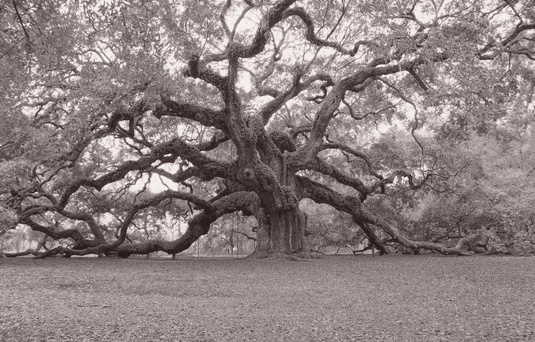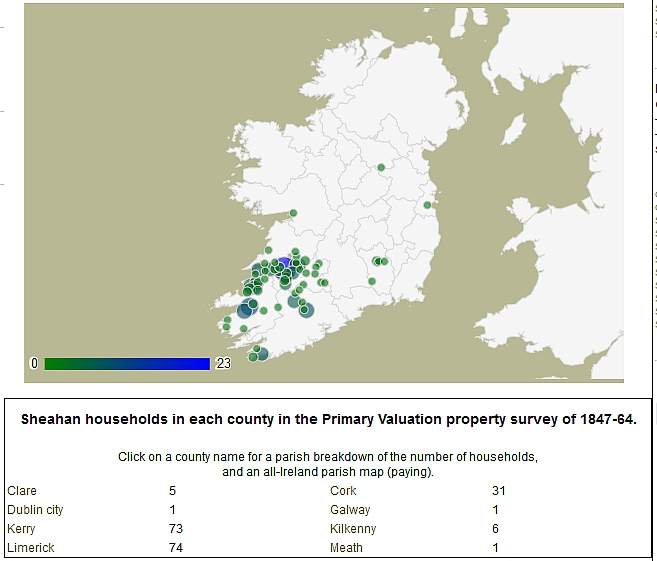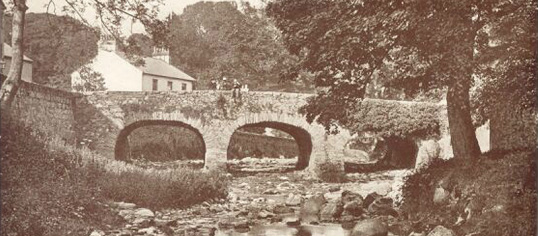Ira Shahan: " If your last name is Shahan, you are related!"
Huffman and Shahan Family History: Includes Rhodehamel - Seely - Bruss and Benner Families.
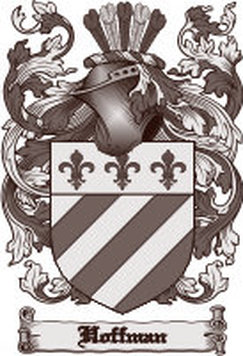
Two familys, both tracing their roots back to the Huffman (Hoffman: German spelling) family.
Hoffmann and Hofmann are German surnames (meaning steward, one who manages the property of another) which in American English or Eastern European languages, like Yiddish, are often rendered as:
Hoffman, Hofman, Hofmann and also Huffman and Gofman.
Hoffmann and Hofmann are German surnames (meaning steward, one who manages the property of another) which in American English or Eastern European languages, like Yiddish, are often rendered as:
Hoffman, Hofman, Hofmann and also Huffman and Gofman.
Rhodehamel: Early Origins
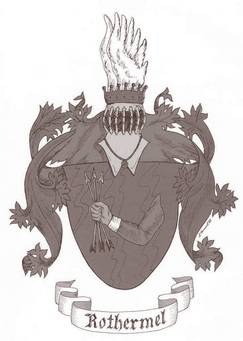
Johann Jakob Rothhomel / Rhodehamel, sometimes recorded as: Rhodehamel
-Rothamel-Rothhamel, came from the Hessen-Kassel area of Germany, and came to America as a Hession soldier. He was born about 1759/60, and was shipped here with his unit in October 1776. Unlike many of the other Hession soldiers who deserted before German obligations to the British were over, he did not desert his unit until around May of 1783, He would remain "hidden" until 1788. He married Maria Muller, of Berks Co Pa., in 1789.
Sometime between 1789 and 1793, He had moved to Westmoreland Co., PA, where a more extensive paper trail can be found, as well as church and tax records. He came to Ohio in 1803.
All of the early "Rhodehamels", regardless of spelling, in Montgomery, Miami, Shelby Counties of Ohio, as well as a few adjoining counties, come from this one family line, of "Rhodehammel" John Jacob Rhodehamel and Anna Maria Muller children were:
* Jacob Jr. Born: 1789
* Anna Elizabeth Born: 1792
* John Born: 1793
* Henry Born: 1795
* Mary Born: 1797
* Peter Born: 1799
* Samuel E. Born: 1802-1803
* Catherine Born: 1804 and
* Hannah Born: (maybe 1807?).
With all of these Rhodehamel sons, one can see why there are so many Rhodehamels in same area.
-Rothamel-Rothhamel, came from the Hessen-Kassel area of Germany, and came to America as a Hession soldier. He was born about 1759/60, and was shipped here with his unit in October 1776. Unlike many of the other Hession soldiers who deserted before German obligations to the British were over, he did not desert his unit until around May of 1783, He would remain "hidden" until 1788. He married Maria Muller, of Berks Co Pa., in 1789.
Sometime between 1789 and 1793, He had moved to Westmoreland Co., PA, where a more extensive paper trail can be found, as well as church and tax records. He came to Ohio in 1803.
All of the early "Rhodehamels", regardless of spelling, in Montgomery, Miami, Shelby Counties of Ohio, as well as a few adjoining counties, come from this one family line, of "Rhodehammel" John Jacob Rhodehamel and Anna Maria Muller children were:
* Jacob Jr. Born: 1789
* Anna Elizabeth Born: 1792
* John Born: 1793
* Henry Born: 1795
* Mary Born: 1797
* Peter Born: 1799
* Samuel E. Born: 1802-1803
* Catherine Born: 1804 and
* Hannah Born: (maybe 1807?).
With all of these Rhodehamel sons, one can see why there are so many Rhodehamels in same area.
Shahan: Early Origins
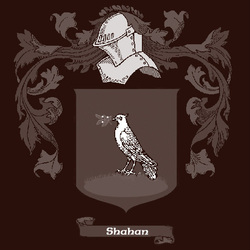
As the story goes, or legend if you will, that three brothers came over from the old country (Ireland) to make a new start for themselves. It is said their names were George, David and John. Two would settle in the east and one would head out west to stake his claim. The two were supposed to settle in the colony of Virginia, what is now the State of West Virginia.
As with all stories, legends, and even Fairy Tales there remains some truth to them, so they say. There were three "brothers"... Two of which, John and David, did settle in the colony of Virginia. But it was their Grand Father who imagrated here from Ireland. And, David had a son, named George. And, as the old story of our past suggested, there were three clansman that did came over from Ireland and started what we know as the Shahan Family tree! All three landed in Maryland. Cornelius and Thomas Shehane arrived in Mary-land on the sailing ship, the Encrease of Youghal, Ireland. It seems the third Darby Shehane arrived sometime later on an English sailing ship, in Maryland as well.
As with all stories, legends, and even Fairy Tales there remains some truth to them, so they say. There were three "brothers"... Two of which, John and David, did settle in the colony of Virginia. But it was their Grand Father who imagrated here from Ireland. And, David had a son, named George. And, as the old story of our past suggested, there were three clansman that did came over from Ireland and started what we know as the Shahan Family tree! All three landed in Maryland. Cornelius and Thomas Shehane arrived in Mary-land on the sailing ship, the Encrease of Youghal, Ireland. It seems the third Darby Shehane arrived sometime later on an English sailing ship, in Maryland as well.
Cornelius Shehane
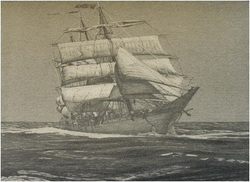
The Encrease
Cornelius Shehane is my (the webmaster of this website) "direct decendant". Thomas and Cornelius Shehane (Shahan) landed in Talbot County, Maryland on March of 1679, on the sailing ship, the Encrease. Captian Phillip Popestone signed over the head-rights to Cornelius, on March 19th, to John Stevens of Dorchester County, Maryland.
Cornelius Shahan (Shehane) was born about 1660-1669 and came to America as an indentured servant. He could have been as young as 9 years old when he made the trip to America!
Captian Poplesstone signed the rights to twenty people over to John Stevens, that day.
Including:
William Newmarch Marriah Keally
Timothy Connor Adam Merritt
Thomas White Joan English
Habis Loftus John Legge
Thomas Gelliburne James Smyrh
Dennie Nurane Edmond Goremond
Honor Mulrean Thomas Sullen
Robert Hawkins Cornelius Shehane
John Brendevill Katherine Lonry
Then the document notes: Philip Poplestone craves rights to one thousand acres of land for transportation of 20 persons into this province.
Later, on March the 28th, Captian Poplestone signed over the rights to an additional forty-six individuals to Williasm Sharpe of Talbot County, Maryland. Of these forty-six individuals, Thomas Shahane was one.
* (Notes prepared by William G. Hills, 1939 and located by Ron Shawhanin 1982 at the DAR Headquarters, Washington, D.C. Page 128. Thesenotes suggest the ship probably came from London. See also referenceto Dorchester County Patent Records, Liber WC, folio 129, in ElizabethShahan, An Early History of the Shahan Family 1678-1920, Gaithersburg, MD, 1995.)
In the American colonies farmers, planters, and shopkeepers found it very difficult to hire free workers, primarily because it was so easy for potential workers to set up their own farms. Consequently, a common solution was to pay the passage of a young worker from England or Germany, who would work for several years to pay off the travel costs debt. During the indenture period the servants were not paid wages, but were provided with food, accommodation, clothing and training. Most were under the age of twenty-one.
Darby Shehane: aka Dhóibhi Siochain (Irish Gaelic spelling) anglicised as David Sheehan. Darby undoubtedly pronounced his name in Gaelic as "Darvy Shawn'n." and it was heard by the "English scribe" as "Darby Shawhan" who penned the name we inherited.
Darby Shehane, Born: 1673 in Ireland Passed: April 3rd, 1736 in Kent County, Maryland. Occupation: Tobacco farmer. Darby married Sarah Meeks on November 20th, 1707 at St. Paul's Parish, Kent County, Maryland.
Children of Darby and Sarah Shehane: (Note the spelling of the children's names.)
* Daniel Shawhan Born: 1709
* John Shawhan Born: 1711
* Dennis Shawhan Born: 1713
* Sarah Shawhan Born: 1715
* Elizabeth Shawhan Born: 1722
* Darby Shawhan Born: 1724
* David Shawhan Born: 1726
* William Shawhan Born: 1728
More history on Darby Shehane... The site of the seventeenth century settlement known as New Yarmouth was built on Eastern Neck near Gray's Inn Creek by a man named Tovey. He purchased one hundred acres of land called "Huntingfield" from Thomas Ringgold. Maps still show "Hunting Field Point" and "Huntingfield Creek." In 1674 (Darby Shawhan, age (1) Charles Calvert had ordered court sessions to move from Eastern Neck Island to the main-land and by 1679 (Darby Shawhan, age 6) the first Kent County court-house had been built at New Yarmouth. This area remained a commercial center and a port of entry until 1696 (Darby Shawhan, age 23) when the courthouse was moved to it's present site on the Chester River. With this relocation, the center of county government followed the inland shift of the population.
Cornelius Shahan (Shehane) was born about 1660-1669 and came to America as an indentured servant. He could have been as young as 9 years old when he made the trip to America!
Captian Poplesstone signed the rights to twenty people over to John Stevens, that day.
Including:
William Newmarch Marriah Keally
Timothy Connor Adam Merritt
Thomas White Joan English
Habis Loftus John Legge
Thomas Gelliburne James Smyrh
Dennie Nurane Edmond Goremond
Honor Mulrean Thomas Sullen
Robert Hawkins Cornelius Shehane
John Brendevill Katherine Lonry
Then the document notes: Philip Poplestone craves rights to one thousand acres of land for transportation of 20 persons into this province.
Later, on March the 28th, Captian Poplestone signed over the rights to an additional forty-six individuals to Williasm Sharpe of Talbot County, Maryland. Of these forty-six individuals, Thomas Shahane was one.
* (Notes prepared by William G. Hills, 1939 and located by Ron Shawhanin 1982 at the DAR Headquarters, Washington, D.C. Page 128. Thesenotes suggest the ship probably came from London. See also referenceto Dorchester County Patent Records, Liber WC, folio 129, in ElizabethShahan, An Early History of the Shahan Family 1678-1920, Gaithersburg, MD, 1995.)
In the American colonies farmers, planters, and shopkeepers found it very difficult to hire free workers, primarily because it was so easy for potential workers to set up their own farms. Consequently, a common solution was to pay the passage of a young worker from England or Germany, who would work for several years to pay off the travel costs debt. During the indenture period the servants were not paid wages, but were provided with food, accommodation, clothing and training. Most were under the age of twenty-one.
Darby Shehane: aka Dhóibhi Siochain (Irish Gaelic spelling) anglicised as David Sheehan. Darby undoubtedly pronounced his name in Gaelic as "Darvy Shawn'n." and it was heard by the "English scribe" as "Darby Shawhan" who penned the name we inherited.
Darby Shehane, Born: 1673 in Ireland Passed: April 3rd, 1736 in Kent County, Maryland. Occupation: Tobacco farmer. Darby married Sarah Meeks on November 20th, 1707 at St. Paul's Parish, Kent County, Maryland.
Children of Darby and Sarah Shehane: (Note the spelling of the children's names.)
* Daniel Shawhan Born: 1709
* John Shawhan Born: 1711
* Dennis Shawhan Born: 1713
* Sarah Shawhan Born: 1715
* Elizabeth Shawhan Born: 1722
* Darby Shawhan Born: 1724
* David Shawhan Born: 1726
* William Shawhan Born: 1728
More history on Darby Shehane... The site of the seventeenth century settlement known as New Yarmouth was built on Eastern Neck near Gray's Inn Creek by a man named Tovey. He purchased one hundred acres of land called "Huntingfield" from Thomas Ringgold. Maps still show "Hunting Field Point" and "Huntingfield Creek." In 1674 (Darby Shawhan, age (1) Charles Calvert had ordered court sessions to move from Eastern Neck Island to the main-land and by 1679 (Darby Shawhan, age 6) the first Kent County court-house had been built at New Yarmouth. This area remained a commercial center and a port of entry until 1696 (Darby Shawhan, age 23) when the courthouse was moved to it's present site on the Chester River. With this relocation, the center of county government followed the inland shift of the population.
Oh, it is the biggest mixup that you have ever seen,
Me father, he was Orange, and me mother, she was Green.
The Big Question: Catholic or Protestant
Paul Sheahan from Connecticut recently writes:
When I came across your website the first question that came to mind is where your family originated in Ireland before sailing from Maryland. I noticed your website mentions your particular family originated in County Down. Though in my research of the Sheehan name and its various spellings, the Sheehan clan apparently originated around the area of County Clare, spreading south into Limerick and Cork (see attached map which I found online). So to see mention of County Down was a big surprise. I suppose it's possible for a family of our surname to have packed up from the area of Clare/Limerick/Cork and moved to County Down, but from what I've been able to gather, those with the Sheahan surname and its various spellings seemed to remain Catholic century to century, and County Down is certainly Protestant territory - another reason I found County Down to be an unusual location. I was wondering where it's documented showing your family is from County Down? I'd really like to read the documentation, wherever it may be. I was looking for something on your website but didn't see it as I skimmed through, and possibly could have just missed it.
When I came across your website the first question that came to mind is where your family originated in Ireland before sailing from Maryland. I noticed your website mentions your particular family originated in County Down. Though in my research of the Sheehan name and its various spellings, the Sheehan clan apparently originated around the area of County Clare, spreading south into Limerick and Cork (see attached map which I found online). So to see mention of County Down was a big surprise. I suppose it's possible for a family of our surname to have packed up from the area of Clare/Limerick/Cork and moved to County Down, but from what I've been able to gather, those with the Sheahan surname and its various spellings seemed to remain Catholic century to century, and County Down is certainly Protestant territory - another reason I found County Down to be an unusual location. I was wondering where it's documented showing your family is from County Down? I'd really like to read the documentation, wherever it may be. I was looking for something on your website but didn't see it as I skimmed through, and possibly could have just missed it.
Editor's note: County Down was where Cornelius Shehane listed as his home county. But, there are many references to County Cork as well. As I have yet to do any family research beyond the shores of America, I cannot say for certain where in Ireland Cornelius actually hailed from. I too was very surprised that Cornelius was protestant, as I was always told our family had Catholic history. Just a few of the additional mysteries yet to unlock! The following names are listed as popular Irish-Catholic Christian names.
- Conchobar: Connor, Cornelius, Constantine
Another interesting fact... In the eighteenth century the qualification for voting at elections in counties in Ireland was the forty shilling freehold. This meant property worth forty shillings above the rent and was either owned outright or leased on certain conditions. Leases for lives (usually three) lasting during the lives of named individuals, qualified as freeholds for voting purposes. Catholics could not vote at elections between 1728 and 1793, nor could anyone married to a Catholic, and it was not until 1829 that Catholics were allowed to sit in Parliament. This regulation was strictly enforced. From 1728 voters in Ireland had to conform to an increasingly strict system of registration. Some counties, such as counties Armagh and Down, have significant numbers of registers giving the names and addresses of freeholders and the locations of the freeholds that entitled them to vote, however many counties have only one or two registers (or transcripts of the originals) which survive.
Last Will and Testament:
* September 19th, 1716. 50 acres named Darby's!
* September 8th, 1721. Name of Darby Shehorne, Kent Co., Md. appears on bond of
Francis Collins, adm. of Edward Carroll.
* November 20th, 1733. Deposition in Kent Co., Md., Darby gave his age as 60 years.
October 16th, 1735. Darby's Last Will and Testament:
In the name of God Amen; I, Darby Shehane of Kent County in the province of Maryland, planter, being sick in body but of good and perfect memory praised be almighty God - due for avoiding controversies after my decease make, publish and declare this my last will and testament in manner and form following that is to say. First and principally my soul I resign into the hands of almighty God my creator, hoping that by and through the only merits and interception of my Lord and Saviour Jesus Christ to obtain free pardon and remission of all my sins, my body I committ to the earth from whence it was formed to be decently buried at discretion of my executrix herein after named and as for and concerning all such temporal estate as the Lord shall be pleased to bless me with at my decease.
I give, will and dispose of the same in the manner following (that is to say
first) I will that all such just debts as I shall owe at my death and my funerall charges shall be fully paid and discharged. I give and bequeath unto my dear and loving wife Sarah Shawin whom I appoint, constitute and ordain my sole executrix of this my last will and testament all my lands, living and moveable estate whatsoever or where-soever as well real as personal (only these things omitted) during he naturall life.
Item: I give and bequeath unto my beloved son Daniel Shawn one long gun and no more.
Item: I give and bequeath unto my beloved son John Shawn one sow and pigg and no more.
Item: I give and bequeath unto my beloved son Dennis Shawn, one young
horse four years old, called Doctor, and no more.
Item: I give and bequeath unto my beloved daughter Sarah Dier the now wife of Edward Dier one yearling heifer and no more that is next spring ten
years old.
Item: I give and bequeath unto my two beloved sons Darby Shawn and David Shawn my Dwelling plantation being part of a tract of land called Shad's Hole containing one hundred and ten acres after my beloved wife's
decease.
Item: I give and bequeath unto my beloved daughter Elizabeth Shawn one cow and calf and one ewe lamb and no more, when she arrives or to the age of sixteen years.
Item: I give leave and bequeath unto my well beloved wife Sarah Shawn my three sons - Dennis, Darby, David and William Shawn to continue with my executrix till they arrive at age of twenty one years and I do hereby revoke anull and make void all former wills by me at any time made and do declare these proposals only to be my last will and testament. In witness whereof I the said Darby Shawin to this my last will and testament have set my own hand and seal this sixteen day of October in the ninth year of the reign of our sovereign Lord George the second by the grace of God of Great Brittain, France and Ireland King, defender of the Faith and so forth and in the year of our Lord one thousand seven hundred and thirty five.
Darby Shehane
Witnesses: George Barber, John Read, Francis Read
3rd Apr 1736. Darby's will probated. 27th Oct 1736.
Estate of Darby Shehane, Kent Co., appraised by John Gleaves and Thomas
Hatcheson. Daniel Shehawn listed as administrator. Sarah Dyer and John
Shawhan listed as near of kin. Francis Bellows listed as largest creditor.
Inventory of Darby Shehane's estate. Witnesses: John Shawhan, son; Daniel Shehane, son; Sarah Dyer, daughter; Francis Belles, greatest creditor.
3 feather bed bolsters and pillows, 58 pounds of wool, 3 rugs, 1 linen wheel, 4 blankets, 3 chests, 4 large pots with hooks, 3 stone jugs, 1 frying pan, 3 axes, 3 arugurs, 2 files, bricks, tackle & block, 43 lbs corn "stick baskit", carving knife, iron candle stick, branding iron, 2 locks, 2 bells, 1 "speling book," "buter churn tub," washing tub, 1 cart with traces and "pare of harnes," 9 sheep, 1 old sow, 4 young hogs, 2 cows and calfs, 2 barren cows, 1 "tabel and forms," 1 old bay horse 15 yrs old, 1 plowshare, 1 old mare and yearlong colt, 8-900 pounds of tobacco.
27th Oct 1736. "came Daniell Shehane and made oath...that this is a good and perfect inventory...."
* September 8th, 1721. Name of Darby Shehorne, Kent Co., Md. appears on bond of
Francis Collins, adm. of Edward Carroll.
* November 20th, 1733. Deposition in Kent Co., Md., Darby gave his age as 60 years.
October 16th, 1735. Darby's Last Will and Testament:
In the name of God Amen; I, Darby Shehane of Kent County in the province of Maryland, planter, being sick in body but of good and perfect memory praised be almighty God - due for avoiding controversies after my decease make, publish and declare this my last will and testament in manner and form following that is to say. First and principally my soul I resign into the hands of almighty God my creator, hoping that by and through the only merits and interception of my Lord and Saviour Jesus Christ to obtain free pardon and remission of all my sins, my body I committ to the earth from whence it was formed to be decently buried at discretion of my executrix herein after named and as for and concerning all such temporal estate as the Lord shall be pleased to bless me with at my decease.
I give, will and dispose of the same in the manner following (that is to say
first) I will that all such just debts as I shall owe at my death and my funerall charges shall be fully paid and discharged. I give and bequeath unto my dear and loving wife Sarah Shawin whom I appoint, constitute and ordain my sole executrix of this my last will and testament all my lands, living and moveable estate whatsoever or where-soever as well real as personal (only these things omitted) during he naturall life.
Item: I give and bequeath unto my beloved son Daniel Shawn one long gun and no more.
Item: I give and bequeath unto my beloved son John Shawn one sow and pigg and no more.
Item: I give and bequeath unto my beloved son Dennis Shawn, one young
horse four years old, called Doctor, and no more.
Item: I give and bequeath unto my beloved daughter Sarah Dier the now wife of Edward Dier one yearling heifer and no more that is next spring ten
years old.
Item: I give and bequeath unto my two beloved sons Darby Shawn and David Shawn my Dwelling plantation being part of a tract of land called Shad's Hole containing one hundred and ten acres after my beloved wife's
decease.
Item: I give and bequeath unto my beloved daughter Elizabeth Shawn one cow and calf and one ewe lamb and no more, when she arrives or to the age of sixteen years.
Item: I give leave and bequeath unto my well beloved wife Sarah Shawn my three sons - Dennis, Darby, David and William Shawn to continue with my executrix till they arrive at age of twenty one years and I do hereby revoke anull and make void all former wills by me at any time made and do declare these proposals only to be my last will and testament. In witness whereof I the said Darby Shawin to this my last will and testament have set my own hand and seal this sixteen day of October in the ninth year of the reign of our sovereign Lord George the second by the grace of God of Great Brittain, France and Ireland King, defender of the Faith and so forth and in the year of our Lord one thousand seven hundred and thirty five.
Darby Shehane
Witnesses: George Barber, John Read, Francis Read
3rd Apr 1736. Darby's will probated. 27th Oct 1736.
Estate of Darby Shehane, Kent Co., appraised by John Gleaves and Thomas
Hatcheson. Daniel Shehawn listed as administrator. Sarah Dyer and John
Shawhan listed as near of kin. Francis Bellows listed as largest creditor.
Inventory of Darby Shehane's estate. Witnesses: John Shawhan, son; Daniel Shehane, son; Sarah Dyer, daughter; Francis Belles, greatest creditor.
3 feather bed bolsters and pillows, 58 pounds of wool, 3 rugs, 1 linen wheel, 4 blankets, 3 chests, 4 large pots with hooks, 3 stone jugs, 1 frying pan, 3 axes, 3 arugurs, 2 files, bricks, tackle & block, 43 lbs corn "stick baskit", carving knife, iron candle stick, branding iron, 2 locks, 2 bells, 1 "speling book," "buter churn tub," washing tub, 1 cart with traces and "pare of harnes," 9 sheep, 1 old sow, 4 young hogs, 2 cows and calfs, 2 barren cows, 1 "tabel and forms," 1 old bay horse 15 yrs old, 1 plowshare, 1 old mare and yearlong colt, 8-900 pounds of tobacco.
27th Oct 1736. "came Daniell Shehane and made oath...that this is a good and perfect inventory...."
Ireland: Sheehans or Shehanes are the descendants of the Gaelic-Irish O'Siodhachain tribe (family). The name is derived from Siodhach, which means "Peaceful".
The O'Siodhachain tribe were originally located in the barony of Lower Connello in County Limerick, where they were part of the Dal gCais tribal grouping. A further sept (A sept is an English word for a division of a family, especially of a Scottish or an Irish Clan.) O'Sheehan was established hereditary trumpeters to the ruling O'Kellys. The name today, is ranked as the seventy-seventh most numerous name in Ireland, with about 8,000 members strong.
The O'Siodhachain tribe were originally located in the barony of Lower Connello in County Limerick, where they were part of the Dal gCais tribal grouping. A further sept (A sept is an English word for a division of a family, especially of a Scottish or an Irish Clan.) O'Sheehan was established hereditary trumpeters to the ruling O'Kellys. The name today, is ranked as the seventy-seventh most numerous name in Ireland, with about 8,000 members strong.
IRISH: THE FORGOTTEN WHITE SLAVES
My Father had what I thought was an odd quote: "An Irishman is nothing more than a black man turned inside out." This article might help to explain his quote...
They came as slaves: human cargo transported on British ships bound for the Americas. They were shipped by the hundreds of thousands and included men, women, and even the youngest of children.
Whenever they rebelled or even disobeyed an order, they were punished in the harshest ways. Slave owners would hang their human property by their hands and set their hands or feet on fire as one form of punishment. Some were burned alive and had their heads placed on pikes in the marketplace as a warning to other captives.
We don’t really need to go through all of the gory details, do we? We know all too well the atrocities of the African slave trade. But are we talking about African slavery? King James VI and Charles I also led a continued effort to enslave the Irish. Britain’s Oliver Cromwell furthered this practice of dehumanizing one’s next door neighbour.
The Irish slave trade began when James VI sold 30,000 Irish prisoners as slaves to the New World. His Proclamation of 1625 required Irish political prisoners be sent overseas and sold to English settlers in the West Indies.
By the mid 1600s, the Irish were the main slaves sold to Antigua and Montserrat. At that time, 70% of the total population of Montserrat were Irish slaves. Ireland quickly became the biggest source of human livestock for English merchants. The majority of the early slaves to the New World were actually white. From 1641 to 1652, over 500,000 Irish were killed by the English and another 300,000 were sold as slaves. Ireland’s population fell from about 1,500,000 to 600,000 in one single decade. Families were ripped apart as the British did not allow Irish dads to take their wives and children with them across the Atlantic. This led to a helpless population of homeless women and children. Britain’s solution was to auction them off as well.
During the 1650s, over 100,000 Irish children between the ages of 10 and 14 were taken from their parents and sold as slaves in the West Indies, Virginia and New England. In this decade, 52,000 Irish (mostly women and children) were sold to Barbados and Virginia. Another 30,000 Irish men and women were also transported and sold to the highest bidder. In 1656, Cromwell ordered that 2000 Irish children be taken to Jamaica and sold as slaves to English settlers.
Many people today will avoid calling the Irish slaves what they truly were: Slaves. They’ll come up with terms like “Indentured Servants” to describe what occurred to the Irish. However, in most cases from the 17th and 18th centuries, Irish slaves were nothing more than human cattle. As an example, the African slave trade was just beginning during this same period. It is well recorded that African slaves, not tainted with the stain of the hated Catholic theology and more expensive to purchase, were often treated far better than their Irish counterparts.
African slaves were very expensive during the late 1600s (£50 Sterling). Irish slaves came cheap (no more than £5 Sterling). If a planter whipped, branded or beat an Irish slave to death, it was never a crime. A death was a monetary setback, but far cheaper than killing a more expensive African. The English masters quickly began breeding the Irish women for both their own personal pleasure and for greater profit. Children of slaves were themselves slaves, which increased the size of the master’s free workforce. Even if an Irish woman somehow obtained her freedom, her kids would remain slaves of her master. Thus, Irish mothers, even with this new found emancipation, would seldom abandon their children and would remain in servitude.
In time, the English thought of a better way to use these women to increase their market share: The settlers began to breed Irish women and girls (many as young as 12) with African men to produce slaves with a distinct complexion. These new “mulatto” slaves brought a higher price than Irish livestock and, likewise, enabled the settlers to save money rather than purchase new African slaves. This practice of interbreeding Irish females with African men went on for several decades and was so widespread that, in 1681, legislation was passed “forbidding the practice of mating Irish slave women to African slave men for the purpose of producing slaves for sale.” In short, it was stopped only because it interfered with the profits of a large slave transport company.
England continued to ship tens of thousands of Irish slaves for more than a century. Records state that, after the 1798 Irish Rebellion, thousands of Irish slaves were sold to both America and Australia. There were horrible abuses of both African and Irish captives. One British ship even dumped 1,302 slaves into the Atlantic Ocean so that the crew would have plenty of food to eat. There is little question the Irish experienced the horrors of slavery as much (if not more, in the 17th Century) as the Africans did. There is also little question that those brown, tanned faces you witness in your travels to the West Indies are very likely a combination of African and Irish ancestry.
In 1839, Britain finally decided on it’s own to end its participation in Satan’s highway to hell and stopped transporting slaves. While their decision did not stop pirates from doing what they desired, the new law slowly concluded this chapter of Irish misery. But, if anyone, black or white, believes that slavery was only an African experience, then they’ve got it completely wrong. Irish slavery is a subject worth remembering, not erasing from our memories. But, why is it so seldom discussed? Do the memories of hundreds of thousands of Irish victims not merit more than a mention from an unknown writer?
Or is their story to be the one that their English masters intended: To completely disappear as if it never happened.None of the Irish victims ever made it back to their homeland to describe their ordeal. These are the lost slaves; the ones that time and biased history books conveniently forgot.
My Father had what I thought was an odd quote: "An Irishman is nothing more than a black man turned inside out." This article might help to explain his quote...
They came as slaves: human cargo transported on British ships bound for the Americas. They were shipped by the hundreds of thousands and included men, women, and even the youngest of children.
Whenever they rebelled or even disobeyed an order, they were punished in the harshest ways. Slave owners would hang their human property by their hands and set their hands or feet on fire as one form of punishment. Some were burned alive and had their heads placed on pikes in the marketplace as a warning to other captives.
We don’t really need to go through all of the gory details, do we? We know all too well the atrocities of the African slave trade. But are we talking about African slavery? King James VI and Charles I also led a continued effort to enslave the Irish. Britain’s Oliver Cromwell furthered this practice of dehumanizing one’s next door neighbour.
The Irish slave trade began when James VI sold 30,000 Irish prisoners as slaves to the New World. His Proclamation of 1625 required Irish political prisoners be sent overseas and sold to English settlers in the West Indies.
By the mid 1600s, the Irish were the main slaves sold to Antigua and Montserrat. At that time, 70% of the total population of Montserrat were Irish slaves. Ireland quickly became the biggest source of human livestock for English merchants. The majority of the early slaves to the New World were actually white. From 1641 to 1652, over 500,000 Irish were killed by the English and another 300,000 were sold as slaves. Ireland’s population fell from about 1,500,000 to 600,000 in one single decade. Families were ripped apart as the British did not allow Irish dads to take their wives and children with them across the Atlantic. This led to a helpless population of homeless women and children. Britain’s solution was to auction them off as well.
During the 1650s, over 100,000 Irish children between the ages of 10 and 14 were taken from their parents and sold as slaves in the West Indies, Virginia and New England. In this decade, 52,000 Irish (mostly women and children) were sold to Barbados and Virginia. Another 30,000 Irish men and women were also transported and sold to the highest bidder. In 1656, Cromwell ordered that 2000 Irish children be taken to Jamaica and sold as slaves to English settlers.
Many people today will avoid calling the Irish slaves what they truly were: Slaves. They’ll come up with terms like “Indentured Servants” to describe what occurred to the Irish. However, in most cases from the 17th and 18th centuries, Irish slaves were nothing more than human cattle. As an example, the African slave trade was just beginning during this same period. It is well recorded that African slaves, not tainted with the stain of the hated Catholic theology and more expensive to purchase, were often treated far better than their Irish counterparts.
African slaves were very expensive during the late 1600s (£50 Sterling). Irish slaves came cheap (no more than £5 Sterling). If a planter whipped, branded or beat an Irish slave to death, it was never a crime. A death was a monetary setback, but far cheaper than killing a more expensive African. The English masters quickly began breeding the Irish women for both their own personal pleasure and for greater profit. Children of slaves were themselves slaves, which increased the size of the master’s free workforce. Even if an Irish woman somehow obtained her freedom, her kids would remain slaves of her master. Thus, Irish mothers, even with this new found emancipation, would seldom abandon their children and would remain in servitude.
In time, the English thought of a better way to use these women to increase their market share: The settlers began to breed Irish women and girls (many as young as 12) with African men to produce slaves with a distinct complexion. These new “mulatto” slaves brought a higher price than Irish livestock and, likewise, enabled the settlers to save money rather than purchase new African slaves. This practice of interbreeding Irish females with African men went on for several decades and was so widespread that, in 1681, legislation was passed “forbidding the practice of mating Irish slave women to African slave men for the purpose of producing slaves for sale.” In short, it was stopped only because it interfered with the profits of a large slave transport company.
England continued to ship tens of thousands of Irish slaves for more than a century. Records state that, after the 1798 Irish Rebellion, thousands of Irish slaves were sold to both America and Australia. There were horrible abuses of both African and Irish captives. One British ship even dumped 1,302 slaves into the Atlantic Ocean so that the crew would have plenty of food to eat. There is little question the Irish experienced the horrors of slavery as much (if not more, in the 17th Century) as the Africans did. There is also little question that those brown, tanned faces you witness in your travels to the West Indies are very likely a combination of African and Irish ancestry.
In 1839, Britain finally decided on it’s own to end its participation in Satan’s highway to hell and stopped transporting slaves. While their decision did not stop pirates from doing what they desired, the new law slowly concluded this chapter of Irish misery. But, if anyone, black or white, believes that slavery was only an African experience, then they’ve got it completely wrong. Irish slavery is a subject worth remembering, not erasing from our memories. But, why is it so seldom discussed? Do the memories of hundreds of thousands of Irish victims not merit more than a mention from an unknown writer?
Or is their story to be the one that their English masters intended: To completely disappear as if it never happened.None of the Irish victims ever made it back to their homeland to describe their ordeal. These are the lost slaves; the ones that time and biased history books conveniently forgot.
An old cemetery was recently found. It is small and overgrown with most of the grave markers, too old to read easily. But it has a large family marker that says "Shahan 1886" It is located in South West Monongalia County (Clinton District) bordering Preston County. There are also some other graves marked with the family names of "Miller, Watson and Watkins."
http://www.frontierfolk.net/ramsha_research/crestsite.html
By "Clicking" on some of the pictures on this website - It will link you in some cases to additional Information.
